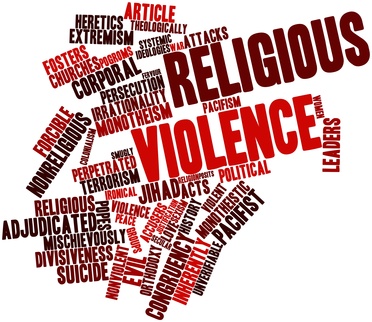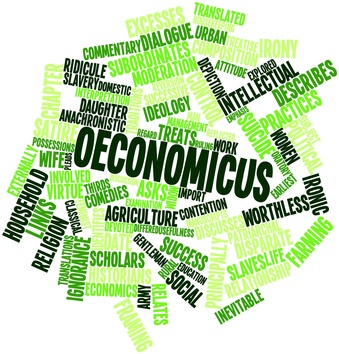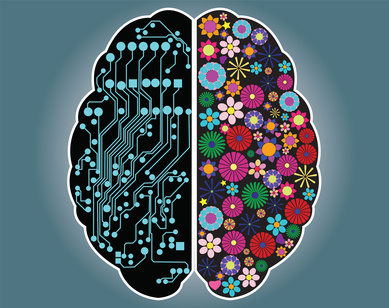Sidebar
Login
Resources
Research Portals for Institute Projects
The subsites under the "Research Portals" are devoted to some of the ongoing research projects within IBCSR. Use these sites to track specific research project of particular interest to you.
Subcategories
Modeling Religion Project 5
The Modeling Relgion Project (MRP), a subproject under the umbrella of IBCSR's Simulation Religion Project, is an ambitious attempt to connect the sciences of modeling and simulation (M&S) with the scientific study of religion (SSR). With generous funding from the John Templeton Foundation, the three years from July 1, 2015 through June 30, 2018 promise an exciting intensification of a new kind of research in the academic study of religion. The first goal of MRP is to produce a simulation development platform that will allow SSR scholars and students to create complex simulations with no programming. The second goal is to produce a series of simulations of the role of religion in key transformations of human civilization, such as the Agricultural Transition (c. 8000 BCE), the Axial age (c. 800-200 BCE), and modernity (c. 1600-2100). The third goal is to explain the importance of M&S to the world of the academic study of religion. This will involve web blogs, outreach efforts, and even a documentary film.
Key personnel: Wesley J. Wildman (PI), Saikou Diallo, F. LeRon Shults, Jose J. Padilla, Ross Gore, Ruben Mancha, Justin E. Lane, Connor P. Wood, Christopher Lynch, Patrick J. McNamara, Jenn Lindsay, Kate Stockly.
Spectrums Project 15
 IBCSR's Spectrums Project is an ambitious attempt to apply what is known about ideological spectrums in politics and morality to the field of religious beliefs and practices. The Project's goal is twofold: firstly, to deepen understanding of why human beings adopt a spectrum of religious and theological viewpoints; and secondly, to discover strategies for mitigating the problems associated with religious extremism and polarized religious discourse. IBCSR's main partners in this project are Dr. Catherine Caldwell-Harris in Boston University's Psychology Department and Dr. Ravi Iyer of the University of Southern California. The project's post-doctoral fellow is Dr. Aimee Radom, who recently completed a dissertation on a related topic. This project is funded by Boston University's School of Theology, the Doug & Gay Lane Foundation, the Lakeside Foundation, and the Arthur Vining Davis Foundations.
IBCSR's Spectrums Project is an ambitious attempt to apply what is known about ideological spectrums in politics and morality to the field of religious beliefs and practices. The Project's goal is twofold: firstly, to deepen understanding of why human beings adopt a spectrum of religious and theological viewpoints; and secondly, to discover strategies for mitigating the problems associated with religious extremism and polarized religious discourse. IBCSR's main partners in this project are Dr. Catherine Caldwell-Harris in Boston University's Psychology Department and Dr. Ravi Iyer of the University of Southern California. The project's post-doctoral fellow is Dr. Aimee Radom, who recently completed a dissertation on a related topic. This project is funded by Boston University's School of Theology, the Doug & Gay Lane Foundation, the Lakeside Foundation, and the Arthur Vining Davis Foundations.
Key personnel: Wesley J. Wildman (PI), Catherine Caldwell-Harris, Ravi Iyer, Aimee Radom, Connor P. Wood, Nicholas DiDonato.
Neuroscience and Religious Cognition Project 7
 The Neuroscience and Religious Cognition Project proposes to identify the alterations in neural systems in patients with Parkinson’s Disease (PD) that could account for previously observed reductions in religiosity and in fluent access to religious concepts. The project uses advances in functional connectivity magnetic resonance imaging (fcMRI) techniques, new psychophysical cognitive priming techniques, and classical ‘on-off’ levodopa (LD) comparative techniques to identify brain system alterations linked with religious cognition changes in these patients. In addition, two doctoral students and one post-doctoral fellow are being trained in the scientific background and experimental techniques relevant to this project. The post-doc will receive advanced training in fcMRI analyses relevant to ‘religion and brain’ issues while the doctoral students will be integrated into all aspects of hypothesis testing procedures of the project. We believe our work with these patients will identify key sources of their deficits as well as illuminate fundamental issues in the neuroscience of religious beliefs, behaviors, and experiences.
The Neuroscience and Religious Cognition Project proposes to identify the alterations in neural systems in patients with Parkinson’s Disease (PD) that could account for previously observed reductions in religiosity and in fluent access to religious concepts. The project uses advances in functional connectivity magnetic resonance imaging (fcMRI) techniques, new psychophysical cognitive priming techniques, and classical ‘on-off’ levodopa (LD) comparative techniques to identify brain system alterations linked with religious cognition changes in these patients. In addition, two doctoral students and one post-doctoral fellow are being trained in the scientific background and experimental techniques relevant to this project. The post-doc will receive advanced training in fcMRI analyses relevant to ‘religion and brain’ issues while the doctoral students will be integrated into all aspects of hypothesis testing procedures of the project. We believe our work with these patients will identify key sources of their deficits as well as illuminate fundamental issues in the neuroscience of religious beliefs, behaviors, and experiences.
Key personnel: Patrick McNamara (PI), Wesley J. Wildman (Co-PI), Raymon Durso, David Salat, Christopher Halloran, Jonathan Morgan, Yorghos Tripodis, Dustin Clark, Brian Teed, and a host of research assistants.
Quantifying Religious Experience Project 12
 IBCSR's Quantifying Religious Experience Project (QRXP) develops methods for measuring the distinctive cognitive and emotional features of religious experiences. The purpose of this project is to furnish a basis for the comparison of religious and spiritual experiences across demographic groups (such as men and women) and across cultures. Such comparisons can be extremely important for an adequate interpretation of religious and spiritual experiences. QRXP is funded by the John Templeton Coundation, Boston University, and IBCSR. A rich de-identified dataset of narratives, phenomenological profiles, and expert ratings is available to researchers who wish to pursue their own analyses.
IBCSR's Quantifying Religious Experience Project (QRXP) develops methods for measuring the distinctive cognitive and emotional features of religious experiences. The purpose of this project is to furnish a basis for the comparison of religious and spiritual experiences across demographic groups (such as men and women) and across cultures. Such comparisons can be extremely important for an adequate interpretation of religious and spiritual experiences. QRXP is funded by the John Templeton Coundation, Boston University, and IBCSR. A rich de-identified dataset of narratives, phenomenological profiles, and expert ratings is available to researchers who wish to pursue their own analyses.
Key personnel: Wesley J. Wildman (PI), Ron Pekala, Nik Zanetti, Ian Cooley.
Simulating Religion Project 3
 The Simulating Religion Project (SRP) is a cluster of subprojects aiming to apply modeling and simulation techniques to the scientific study of religion. Modeling and simulation depends on data, so building and finding datasets is vital. There has been little past simulation research in religion. Extant work has posited very simple human minds, simple interactions, simple behaviors, and simple modes of change. This is for good reasons: excessive complexity in a simulation obscures the relevant lines of causality and causes us to lose cognitive control over our own model. But this leaves us with a problem: too much simplicity gives wrong answers, and too much complexity gives unclear and confused ones. SRP integrates multiple theories of religious cognition and produces tools that are capable of testing hypotheses regarding religion’s social and cultural effects. In particular, the Simulating Religion Project will try to answer questions such as, “What are the factors that contribute to civilizational transformation?”, “What role does religion play in social change?”, and “How do evolved cognitive, emotional and social tendencies interact?” Simulation techniques permit a newly persuasive approach to such questions, complementing approaches pursued in other disciplines.
The Simulating Religion Project (SRP) is a cluster of subprojects aiming to apply modeling and simulation techniques to the scientific study of religion. Modeling and simulation depends on data, so building and finding datasets is vital. There has been little past simulation research in religion. Extant work has posited very simple human minds, simple interactions, simple behaviors, and simple modes of change. This is for good reasons: excessive complexity in a simulation obscures the relevant lines of causality and causes us to lose cognitive control over our own model. But this leaves us with a problem: too much simplicity gives wrong answers, and too much complexity gives unclear and confused ones. SRP integrates multiple theories of religious cognition and produces tools that are capable of testing hypotheses regarding religion’s social and cultural effects. In particular, the Simulating Religion Project will try to answer questions such as, “What are the factors that contribute to civilizational transformation?”, “What role does religion play in social change?”, and “How do evolved cognitive, emotional and social tendencies interact?” Simulation techniques permit a newly persuasive approach to such questions, complementing approaches pursued in other disciplines.
SRP subprojects: Modeling Religion Project (MRP, 2015-2018) | Modeling Religion in Norway (MODRN, 2016-2019)
Key personnel: Wesley J. Wildman (PI), Patrick McNamara, Luke Matthews, Rich Sosis, Charles Nunn, F. LeRon Shults, Saikou Diallo, Justin E. Lane, Connor P. Wood, Christopher Lynch, Ross Gore, Jose Padilla, Ruben Mancha, Jenn Lindsay, Kate Stockly
Spirituality and Health Causation Project 30
 IBCSR's Spirituality and Health Causation Project aims to move beyond the hundreds of correlational studies identifying the health effects of religious and spiritual practices to identify the causal, biochemical mechanisms that mediate spirituality-health connections. IBCSR's partners in this project are Dr. Katherine Verdolini Abbott and Dr. Nicole Li at the University of Pittsburgh. The Spirituality and Health Causation Project is funded in part by an NIH subcontract through the University of Pittsburgh and by Boston University.
IBCSR's Spirituality and Health Causation Project aims to move beyond the hundreds of correlational studies identifying the health effects of religious and spiritual practices to identify the causal, biochemical mechanisms that mediate spirituality-health connections. IBCSR's partners in this project are Dr. Katherine Verdolini Abbott and Dr. Nicole Li at the University of Pittsburgh. The Spirituality and Health Causation Project is funded in part by an NIH subcontract through the University of Pittsburgh and by Boston University.
Key personnel: Wesley J. Wildman (PI), Katherine Verdolini Abbott, Nicole Li, Joel Daniels.
Dimensions of Spirituality Project 0
 Almost everyone uses the word "spirtuality." But what do they mean when they use it? And how can scientists studying spirituality avoid falling into the trap of assuming one meaning while the people who participate in their studies may mean something quite different? The aim of the Dimensions of Spirituality Project is to create a cross-culturally useful inventory of the dimensions of meaning that people associate with spirituality. This inventory can bring self-understanding to individuals and groups that take the inventory. It also places in the hands of researchers a robust and sensitive tool that can guide their imaginative research efforts. The project, led by Dr. Wesley Wildman, was inspired by the quantitative research of sociologist Dr. Nancy Ammerman, who is a key member of the research team. Drs. Wildman and Ammerman are joined by PhD students David Rohr and Nick DiDonato, as well as masters student Lauren Hickey.
Almost everyone uses the word "spirtuality." But what do they mean when they use it? And how can scientists studying spirituality avoid falling into the trap of assuming one meaning while the people who participate in their studies may mean something quite different? The aim of the Dimensions of Spirituality Project is to create a cross-culturally useful inventory of the dimensions of meaning that people associate with spirituality. This inventory can bring self-understanding to individuals and groups that take the inventory. It also places in the hands of researchers a robust and sensitive tool that can guide their imaginative research efforts. The project, led by Dr. Wesley Wildman, was inspired by the quantitative research of sociologist Dr. Nancy Ammerman, who is a key member of the research team. Drs. Wildman and Ammerman are joined by PhD students David Rohr and Nick DiDonato, as well as masters student Lauren Hickey.
Key personnel: Wesley J. Wildman (PI), Nancy Ammerman, David Rohr, Nicholas DiDonato, Lauren Hickey.
Religious Violence Project 0
 IBCSR's Religious Violence Project aims to uncover the biocultural dynamics of religiously inspired and legitimated violence so as to make a strategic contrubtion toward mitigating such violence. IBCSR's partners in this venture include Dr. Charles L. Nunn and Dr. Luke J. Matthews of Harvard University's Biological Anthropology Department and Dr. Richard P. Sosis of the University of Connecticut's Anthropology Department; and Jeffrey Edmonds of Boston University's Graduate Division of Religious and Theological Studies.
IBCSR's Religious Violence Project aims to uncover the biocultural dynamics of religiously inspired and legitimated violence so as to make a strategic contrubtion toward mitigating such violence. IBCSR's partners in this venture include Dr. Charles L. Nunn and Dr. Luke J. Matthews of Harvard University's Biological Anthropology Department and Dr. Richard P. Sosis of the University of Connecticut's Anthropology Department; and Jeffrey Edmonds of Boston University's Graduate Division of Religious and Theological Studies.
Key personnel: Wesley J. Wildman (PI), Richard Sosis, Charles Nunn, Luke Matthews, Jeffrey Edmonds.
Science and the World Religions Project 0
 The Science and the World Religions Project is a publication effort led by Dr. Patrick McNamara and Dr. Wesley Wildman, with the publication support of Praeger Press. The project involves producing three volumes of essays from leading scholars. Each essay deals with a problem or a question that most ordinary people ponder from time to time, approaching that issue in a multidisciplinary, multicultural, and multireligious way. The intended audience is educated non-specialists, but the hope is that academics, scientists, and scholars will also benefit from the volumes.
The Science and the World Religions Project is a publication effort led by Dr. Patrick McNamara and Dr. Wesley Wildman, with the publication support of Praeger Press. The project involves producing three volumes of essays from leading scholars. Each essay deals with a problem or a question that most ordinary people ponder from time to time, approaching that issue in a multidisciplinary, multicultural, and multireligious way. The intended audience is educated non-specialists, but the hope is that academics, scientists, and scholars will also benefit from the volumes.
Key personnel: Patrick McNamara, Wesley J. Wildman.
Ecological Psychology and Religion Project 0
 The Ecological Psychology and Religion Project intends to launch an integrated, multidisciplinary investigation into the importance of embodied theories of perception and consciousness, reason, and emotion for the understanding of religious beliefs, behaviors, and experiences. Both humanities and science disciplines play crucial roles in achieving the necessary conceptual integration. Institute researcher Dr. Nathaniel Barrett is taking the lead in this project, working with Dr. Wesley Wildman to build a network of experts who can make substantive contributions to the project's goals.
The Ecological Psychology and Religion Project intends to launch an integrated, multidisciplinary investigation into the importance of embodied theories of perception and consciousness, reason, and emotion for the understanding of religious beliefs, behaviors, and experiences. Both humanities and science disciplines play crucial roles in achieving the necessary conceptual integration. Institute researcher Dr. Nathaniel Barrett is taking the lead in this project, working with Dr. Wesley Wildman to build a network of experts who can make substantive contributions to the project's goals.
Key personnel: Nathaniel Barrett, Wesley J. Wildman.
Economics, Science and Religion Project 1
 The Economics, Science and Religion Project aims to develop an anthropologically sophisticated theoretical account of the relationship between religion and science in the Euro-American, post-Enlightenment context in conversation with historical and philosophical analyses of the academic study of economics. To this end, the project explores contemporary debates among historians and philosophers of economics over whether the construction of economic theories is most properly regarded as a scientific or a religious enterprise. The aim of the project is not to resolve these debates but to leverage them for the sake of constructing a theoretical account of the relationship between science and religion that is attuned to the intertwined religious and scientific dimensions of human inquiry in an era when economic theorizing plays a large role in shaping human interactions, all the way from local patterns of social organization to the global dynamics of national and international politics.
The Economics, Science and Religion Project aims to develop an anthropologically sophisticated theoretical account of the relationship between religion and science in the Euro-American, post-Enlightenment context in conversation with historical and philosophical analyses of the academic study of economics. To this end, the project explores contemporary debates among historians and philosophers of economics over whether the construction of economic theories is most properly regarded as a scientific or a religious enterprise. The aim of the project is not to resolve these debates but to leverage them for the sake of constructing a theoretical account of the relationship between science and religion that is attuned to the intertwined religious and scientific dimensions of human inquiry in an era when economic theorizing plays a large role in shaping human interactions, all the way from local patterns of social organization to the global dynamics of national and international politics.
Key personnel: Kirk Wegter-McNelly.
Cognitive Style and Religious Attitudes Project 1
 The Cognitive Style and Religious Attitudes Project is a collaboration between two doctoral students at Boston University, Jonathan Morgan and Connor Wood, as well as Dr. Ravi Iyer of the University of Southern California and doctoral student Thomas Talhelm of the University of Virginia. The objective of the project is to test a group of related hypotheses that make predictions about cognitive style, religious attitudes, and the local-cosmopolitan axis of psychological orientation. The team hopes that their research data, which will be gathered through online surveys at the website ExploringMyReligion.org, will help shed light on how social, cultural, cognitive, and personality factors influence – and are influenced by – religious belief. The resulting publications will contribute to conversations in the scientific study of religion, political psychology, moral psychology, political science, and related fields.
The Cognitive Style and Religious Attitudes Project is a collaboration between two doctoral students at Boston University, Jonathan Morgan and Connor Wood, as well as Dr. Ravi Iyer of the University of Southern California and doctoral student Thomas Talhelm of the University of Virginia. The objective of the project is to test a group of related hypotheses that make predictions about cognitive style, religious attitudes, and the local-cosmopolitan axis of psychological orientation. The team hopes that their research data, which will be gathered through online surveys at the website ExploringMyReligion.org, will help shed light on how social, cultural, cognitive, and personality factors influence – and are influenced by – religious belief. The resulting publications will contribute to conversations in the scientific study of religion, political psychology, moral psychology, political science, and related fields.
Key personnel: Jonathan Morgan, Connor P. Wood, Ravi Iyer, Thomas Talhelm.
Group Synchrony and Social Hierarchy Project 0
 The Group Synchrony and Social Hierarchy Project is an investigation into how synchronous activities – such as singing in time or clapping to the same rhythm – can influence small social groups. The project is led by IBCSR researchers Connor Wood and Catherine Caldwell-Harris out of the Boston University Department of Psychology, and specifically focuses on how synchronous behaviors can help small groups to function smoothly in the presence of status hierarchies. Status or dominance hierarchies are a social structure humans share with other animals, in which some individuals are given more respect or deference than others, often on the basis of their skills, competence, gender, size, or background. These "pecking orders" aren't always fair, but they're a major feature of social life. They can cause people serious frustration and difficulty – particularly those at the bottom. The Group Synchrony and Social Hierarchy Project looks at how rhythmic bodily motions – which are often found in religious rituals – can help high- and low-status persons to cooperate effectively together, and maybe even to look past their status roles entirely.
The Group Synchrony and Social Hierarchy Project is an investigation into how synchronous activities – such as singing in time or clapping to the same rhythm – can influence small social groups. The project is led by IBCSR researchers Connor Wood and Catherine Caldwell-Harris out of the Boston University Department of Psychology, and specifically focuses on how synchronous behaviors can help small groups to function smoothly in the presence of status hierarchies. Status or dominance hierarchies are a social structure humans share with other animals, in which some individuals are given more respect or deference than others, often on the basis of their skills, competence, gender, size, or background. These "pecking orders" aren't always fair, but they're a major feature of social life. They can cause people serious frustration and difficulty – particularly those at the bottom. The Group Synchrony and Social Hierarchy Project looks at how rhythmic bodily motions – which are often found in religious rituals – can help high- and low-status persons to cooperate effectively together, and maybe even to look past their status roles entirely.
Key personnel: Connor P. Wood, Catherine Caldwell-Harris.
Sex Differences and Religion Project 6
 The biological evolution of sex in our planetary ecosystem is a complex story covering millions of species and billions of years. The human species further complicates this story with the bio-cultural evolution of sex and gender in complex social niches. Religion and spirituality have played important roles in this process, both influencing and being influenced by sex and gender differences. This project employs perspectives from biological and cultural evolution, developmental biology, anthropology, sociology, psychology, social construction, cognitive neuroscience, neuroimaging, and ethics to understand the intricate multi-directional influences among sex, gender, religion, and spirituality. The Sex Differences and Religion Project has several components. (1) An examination of sex-based differences in religious experiences, using surveys and neuroimaging. (2) The generation of two comprehensive annotated bibliographies, one containing resources relevant to the biology of sex differences, including the genetic and developmental basis for sexual dimorphism and intersex morphology, and the other containing resources relevant to the links among sex, gender, religion, and spirituality. (3) The generation of a cross-cultural dataset supporting phylogenetic analysis of the cultural evolution of religion. (4) A bio-cultural-social-ethical analysis of the controversies surrounding sex differences, sexual attraction, sexual behavior, sexual norms, intersex, and the social construction of gender, particularly as these complex issues influence and are influenced by religion and spirituality. The Sex Differences and Religion Project is led by IBCSR Directors Patrick McNamara and Wesley Wildman with the support of Boston University PhD student and IBCSR Doctoral Fellow Kate Stockly-Meyerdirk.
The biological evolution of sex in our planetary ecosystem is a complex story covering millions of species and billions of years. The human species further complicates this story with the bio-cultural evolution of sex and gender in complex social niches. Religion and spirituality have played important roles in this process, both influencing and being influenced by sex and gender differences. This project employs perspectives from biological and cultural evolution, developmental biology, anthropology, sociology, psychology, social construction, cognitive neuroscience, neuroimaging, and ethics to understand the intricate multi-directional influences among sex, gender, religion, and spirituality. The Sex Differences and Religion Project has several components. (1) An examination of sex-based differences in religious experiences, using surveys and neuroimaging. (2) The generation of two comprehensive annotated bibliographies, one containing resources relevant to the biology of sex differences, including the genetic and developmental basis for sexual dimorphism and intersex morphology, and the other containing resources relevant to the links among sex, gender, religion, and spirituality. (3) The generation of a cross-cultural dataset supporting phylogenetic analysis of the cultural evolution of religion. (4) A bio-cultural-social-ethical analysis of the controversies surrounding sex differences, sexual attraction, sexual behavior, sexual norms, intersex, and the social construction of gender, particularly as these complex issues influence and are influenced by religion and spirituality. The Sex Differences and Religion Project is led by IBCSR Directors Patrick McNamara and Wesley Wildman with the support of Boston University PhD student and IBCSR Doctoral Fellow Kate Stockly-Meyerdirk.
Key personnel: Wesley J. Wildman, Patrick McNamara, Luke Matthews, kate Stockly, Stephanie Arel, Megan DeFranza.
Comparative Cultural Systems Project 1
The Comparative Cultural Systems Project (CCSP) sets to devise methods for the interpretation of religious and cultural traditions from a complex adaptive systems approach (CAS). The CCSP focuses on rare phases of restructuration in which cultures adapt to new environmental conditions. Such phase-transitions provide us with the opportunity to study markers of change and growth by highlighting the contrast between periods of stability (homeostasis) and periods of acute crisis and cultural morphogenesis. This methodology sets to underscore the role of different informational architectures as distinct strategies for the construction of culture.
Key Personnel: Yair Lior, Wesley J. Wildman, Justin E. Lane.
Bibliographies
 The Spirituality, Medicine & Health Bibliography uses a rich categorization scheme and annotations. Free for everyone.
The Spirituality, Medicine & Health Bibliography uses a rich categorization scheme and annotations. Free for everyone.